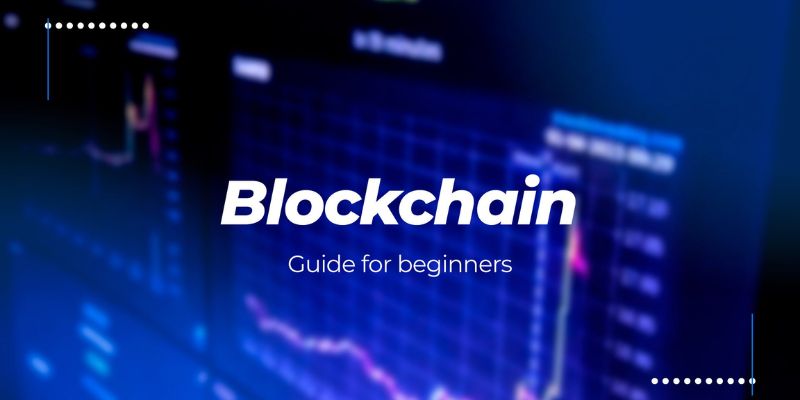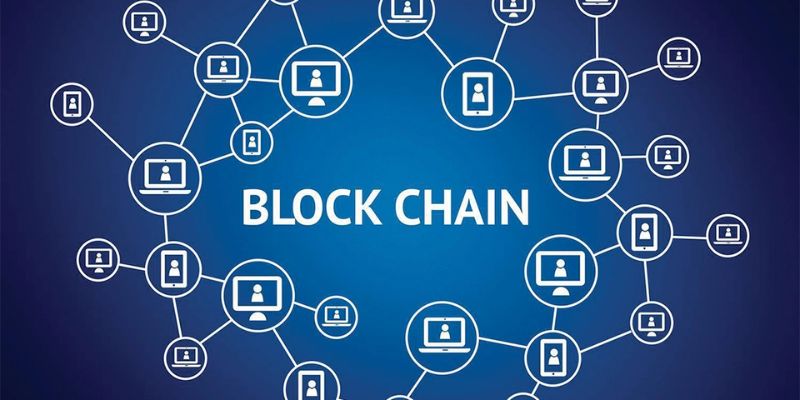Diving into blockchain for beginners can be like unlocking a treasure chest—intimidating yet full of potential. Think of it as a new alphabet in the digital world. You’re about to learn how a system you can’t even see secures transactions and trust on a global scale. From the mysterious origin with Satoshi Nakamoto’s Bitcoin to securing deals without a handshake or a look in the eye, it’s time to unravel the power of decentralized tech. Get ready to grasp what a blockchain is, how it works its digital magic, and why it’s changing the game from money to how we make deals. No jargon, no confusion, just a clear path to becoming a savvy part of this revolutionary tech.
Grasping the Basics: What is Blockchain?
Understanding Distributed Ledger Technology
Picture a book where everyone writes down their trades. That’s blockchain. It’s a bunch of computers sharing a book. They make sure no one lies about what’s written. This shared book is what we call a distributed ledger. Simple, right?
Each page in this book is what we call a “block.” Each block has a list of trades, or transactions. Once a block is full, it’s added to a chain of older blocks. That’s the blockchain. Block by block, trade by trade, it grows. The cool thing is, once written, no one can change a block. It’s locked down tight.
Now, you might wonder if someone can mess with this book. Well, it becomes hard when each computer, or node, has the same book. To mess with it, you’d have to trick all the computers at once. Tough job, right? That’s what makes blockchain secure.
The Genesis: From Satoshi Nakamoto to Bitcoin
Back in 2008, someone named Satoshi Nakamoto introduced bitcoin. Bitcoin was the first use of blockchain. Satoshi wanted a new money system without the middleman. No banks, just people sending money back and forth.
Satoshi’s idea spread like wildfire. Now, we use his blockchain idea for more than just money. We’re talking music, art, keeping track of stuff – all sorts of things. But it all started with Bitcoin. Imagine that!
Bitcoin proved you could trust this blockchain book. You could check it any time to see that your money moved right. People saw Bitcoin work and started thinking, “Hey, what else can we do with this?” And just like that, new ideas popped up.
So, when you hear about blockchain, think of it as the world’s most reliable book. A book that lets people deal with each other without worrying. No cheating, no forgetting. Just everyone agreeing about who owns what. That’s blockchain for you – trusty and straightforward.
That’s our first dip into the big pool of blockchain fun. Stick around, and we’ll keep it clear as we jump into more. Remember this: blockchain started as a simple idea but now, it’s a whole new way to think about sharing and keeping things safe. And it all begins with that shared book – locked, linked, and looking out for us all.
Exploring the Infrastructure of Blockchain
Deciphering Blockchain Network Architecture
You’ve heard the buzz about blockchain, right? It’s a new way to keep records safe. It’s like a digital ledger spread across many computers. This means no single person or group has control. It is code that works together. It’s secure because everyone checks the work.
How does it all hook up, you ask? Picture a spider web. The web has lots of lines that connect at different points. Blockchain is the same. It has many points too, called nodes. These nodes all have the same info. They talk to each other. This keeps things honest and safe. Blockchain technology basics are not hard to get once you see it this way.
Nodes are just computers or servers linked to the blockchain network. Each plays a part in keeping the ledger up to date. They make sure no funny business happens. Now, what types of blockchains are there? Well, there are two main kinds: public and private. Think of it like a park. A public blockchain is open. Anyone can join. Bitcoin is a good example of this. A private blockchain is like your backyard. It’s closed off, and just some have access.
Each type of blockchain uses something called consensus mechanisms to agree on things. It’s like a vote to make sure everyone agrees on the record. Proof of work and proof of stake are two popular ways they vote. They help the network stay safe and keep all the nodes in line.
Unveiling the Blockchain Transaction Process
So, how does a blockchain actually work when you want to send or get stuff? It’s not too tricky. Let’s say you want to send your friend some digital money. First, you tell the system what you want to do. This is your transaction.
Next, your request goes out to the nodes. They check everything to make sure it’s okay. This is where the magic happens. The nodes use math problems to protect and confirm the deal. We call this mining. It’s like a race to solve the puzzle. The first one to finish wins a prize and gets to add a new “block” of info to the ledger.
Now, the info is out there for all to see. But here’s the neat part. It’s all scrambled up. Hash functions help with this. They turn your transaction info into a code that’s hard to crack. This keeps your stuff private.
The system now has a new block added on. This block links to the rest, and they all fit together, like Lego bricks in a line. This line is the blockchain. Each block helps tell the story of every transaction ever made. It’s like a book that keeps on writing itself.
In a nutshell, that’s your blockchain transaction process. It’s like a super-safe, always open, honest way to do deals online. Cryptocurrency fundamentals like this help you get why people like using blockchain for digital money. It’s also great for other things, like making sure the stuff you buy is the real deal, which is why industries like supply chain are getting into it too.
Remember, every time you dig into blockchain, you’re part of a revamp of how we see trust and team work on the web. It’s exciting, isn’t it? So, keep learning and asking questions. That’s how you’ll become a blockchain pro!
Diving into Blockchain Use Cases and Security
Secure Transactions: Blockchain Security Principles
How does blockchain keep my data safe? Think of blockchain as a secure digital diary. Every entry in this diary is a list of transactions. Each page or “block” gets locked with a unique, complex math problem. Only a correct “key”, or “hash function,” can unlock it. Once a page fills up, it gets locked. Then a new page starts, but with a seal that ties it to the page before. It’s like a chain where each link depends on the last. So, if a hacker changes one page, it messes up the seals. Everyone can see that someone tried to cheat.
Blockchain security plays a huge role. It uses heavy-duty encryption to protect data. This stops hackers from getting into the system. How the blocks chain together means changing data is tough. And because data lives across many computers, there’s no single point to attack. But the network can still check if data is true. This mix of features makes blockchain a trusty tool for safekeeping.
Blockchain’s Versatility: From Finance to Supply Chain
What can blockchain do besides run Bitcoin? A whole lot! Let’s start with money. More than being digital cash, blockchain can track ownership. This helps with things like stocks and property. But it’s not stuck in finance. It also shines in tracking products from start to finish. Imagine shopping for food and knowing exactly where each part came from. That’s blockchain magic in the supply chain.
Blockchain helps keep things honest by laying out the journey of a product. If someone says their goods are eco-friendly, blockchain can prove it. This isn’t just good for buyers. It also helps companies spot issues and fix them fast.
In essence, blockchain is like a super notebook that’s tough to rip, lose, or fake pages in. It makes sure our digital stuff stays safe and checks where our real-world things come from. Whether it’s your money, your food, or even your health records, blockchain can make sure everything is right where it should be. It’s a tech friend that promises to keep your secrets and make sure everyone plays fair.
Advancing with Blockchain: Smart Contracts and Cryptocurrencies
Creating and Managing Digital Agreements: Smart Contracts Explained
Let’s chat about smart contracts! They’re like deals you make, but the computer runs the show. No need for people to check if it’s done right; if terms are met, the contract just works. Think of a candy machine. You pay the money, you get the treat – it’s that direct.
Smart contracts live on a blockchain. And what’s a blockchain? A bunch of computers holding hands to keep a joint record of info. This record is the distributed ledger. It’s secure because it’s spread out. There’s no one place to attack, no easy way to change things sneaky-like.
Imagine you’re renting a spot to live. Instead of a paper lease and checks each month, you use a smart contract. Pay your rent, the door code just appears for you. Miss the rent, the code won’t work. Ouch! But it shows how smart contracts are fair.
With smart contracts, you can set up a bet, sell a car, or get paid for work. Each step is recognized by the whole network. That’s part of understanding smart contracts. You’re sure that once the rules are met, the agreed result happens. That’s pretty neat, huh?
Cryptocurrency Fundamentals: Getting Started with Crypto Investments
Now, let’s switch gears to dig into cryptocurrency fundamentals. Cryptos are like online money – bits and bytes you use to buy stuff. They are part of what makes blockchain a game changer. It’s a form of cash that doesn’t need banks or bigwigs. It’s all yours to control!
The first big hit in crypto land was Bitcoin. Created by someone named Satoshi Nakamoto, Bitcoin started a revolution. It showed that people can trade money online without a middleman, fast and far. Now, everyone can send and take in money all over the globe.
When you’re fresh to cryptocurrency, start simple. Learn the ropes, like how to set up a crypto wallet. This wallet holds your digital coins. You’ve got a secret key to open it. Guard that key like a dragon watches its gold because if it’s gone, so is your crypto stash!
Before diving into buys, get the scoop on blockchain platforms comparison. Ethereum for newbies is a great start. It’s a place for more than money; you can use smart contracts too. With crypto, always keep an eye on safety. Blockchain security principles are your friend.
For a starter, watch and learn. See how those cryptocurrencies to watch behave. It’s not just about making quick cash; it’s about being smart. Understanding the blockchain ledger explanation will give you an edge. With it, you track cryptos like Sherlock on a case!
Thinking of mining? Well, mining cryptocurrency basics are like a treasure hunt. Your computer works to solve tricky math, and if it’s first, you earn crypto. But it’s a lot of work and needs lots of power. It might be easier to buy crypto and let it grow over time.
Know this: crypto is risky. Prices hop up and down like bunnies. Start small, don’t risk too much. If you’re into playing it safe, remember, just like any investment, there’s no sure win. Keep a cool head, do your homework, and maybe you’ll find a bit of that digital gold!
In this section, we’ve unwrapped some cool stuff about smart contracts and cryptos. Remember, blockchain is not just tech talk; it’s a door to new ways we can all agree, trade, and trust. Keep studying, and you’ll get the hang of it. It’s an adventure, and everyone’s invited!
We’ve journeyed through the world of blockchain, starting with the core ideas that set the stage for digital ledger tech. From the birth of Bitcoin, courtesy of the elusive Satoshi Nakamoto, to the frameworks that define blockchain’s power. We uncovered how each transaction stitches into a broader, unbreakable chain.
Peeking under the hood, we learned how blockchain’s design reinforces a secure and transparent process. Its wide-reaching arms extend beyond money matters, linking sectors like supply management with newfound efficiency.
Finally, we looked at the impact of smart contracts, carving out reliability in deals. Plus, we took our first steps into crypto investments, an exciting frontier in digital finance. Blockchain is less of a buzzword and more of a backbone for a secure, decentralized future, where every sector can benefit from its integrity and versatility. Every step forward with blockchain means smarter contracts, stronger currencies, and more trust in our digital dealings. This isn’t just tech talk—it’s the path we’re carving for a sturdy, stable digital landscape. Keep your eyes on blockchain; it’s redefining trust in our high-speed world.
Q&A :
What is Blockchain and how does it work for beginners?
Blockchain technology is essentially a decentralized digital ledger that records transactions across many computers in a way that the registered transactions cannot be altered retroactively. For beginners, it’s important to understand that blockchain is the foundation of most cryptocurrencies. It’s made up of blocks that hold batches of timestamped transactions. Each block is linked to the previous one through cryptography, thus creating a chain.
Why is Blockchain considered secure for financial transactions?
Blockchain is considered secure because it employs several layers of security protocols. First, its structure is inherently resistant to modification of the data — once recorded, the data in any given block cannot be altered without altering all subsequent blocks. Moreover, blockchain networks use consensus models that require validation from multiple nodes (or computers) before a transaction can be added to the ledger, making it extremely difficult for fraudulent activities to occur.
Can anyone join a Blockchain network?
The ability to join a blockchain network can vary depending on the type of blockchain. Public blockchains, like Bitcoin and Ethereum, allow anyone to join and participate in the network. However, private blockchains require an invitation and must be validated by either the network starter or by a set of rules put in place by the network starter. It is essential for beginners to distinguish between these types before attempting to join a blockchain network.
What are some practical applications of Blockchain technology?
Blockchain technology has a wide range of practical applications beyond cryptocurrencies. These include supply chain management, where it can provide transparent tracking of goods and materials. It’s also used in securing personal identity information, executing smart contracts that automatically enforce terms, and in the voting process, where it can help prevent fraud and provide verifiable results.
How do I start learning about Blockchain?
To start learning about blockchain, begin with online resources that explain the basic principles and terminology. Many educational platforms offer free introductory courses on blockchain technology. Beginners should also engage with community forums, attend blockchain-related events, and possibly experiment with blockchain development platforms on a small scale to get hands-on experience. Reading books by experts in the field and following the latest news on blockchain can also deepen your understanding of the subject.


